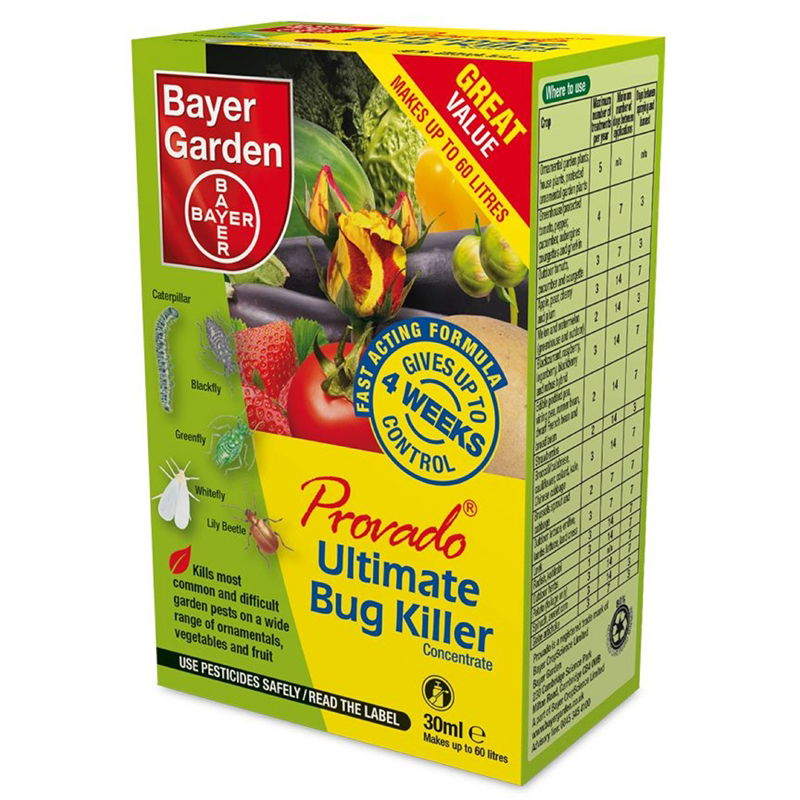Coccoidea ssp.
Contents
- Top Tips & Info
- The Life Cycle of a Scale
- Symptoms
- Susceptible Plants & Parts
- Actions Needed (Includes pros & cons of Chemical or Organic based pesticides)
- Ways to Prevent an Attack in the Future
Need the answer to a specific plant or pest query? Book a 1-to-1 video call with THE HOUSEPLANT DOCTOR™, the website's friendly author, to overcome and address your niggling problem! Available on iMessage, WhatsApp, Facebook Messenger & more.
Top Tips & Info
- Eradication Difficulty - Moderate
- Life Cycle - Up to three months.
- The female can lay up to fifteen eggs a week - fifty in total.
- Scale can affect all areas above the soil line, including the leaves, cubbyholes and flowers.
- Remove and crush all of the visible bugs using your fingernails. For wooded stems, you can even use an old toothbrush to help wipe these areas.
- Prune off the severely affected growths and any flowers that house the infestation.
- Take the plant outside and perform a gentle hose-down. Aim at all of the cubbyholes for complete obliteration and then replace the top inch of the soil to remove any live bugs that have fallen.
- Allow the plant to dry off before applying either an organic or chemical-based pesticide.
- Repeat the wiping, hosing-down and pesticide steps every 7 - 14 days for the next month.
- Quarantine the affected plants until there are no signs of an infestation for over a month.
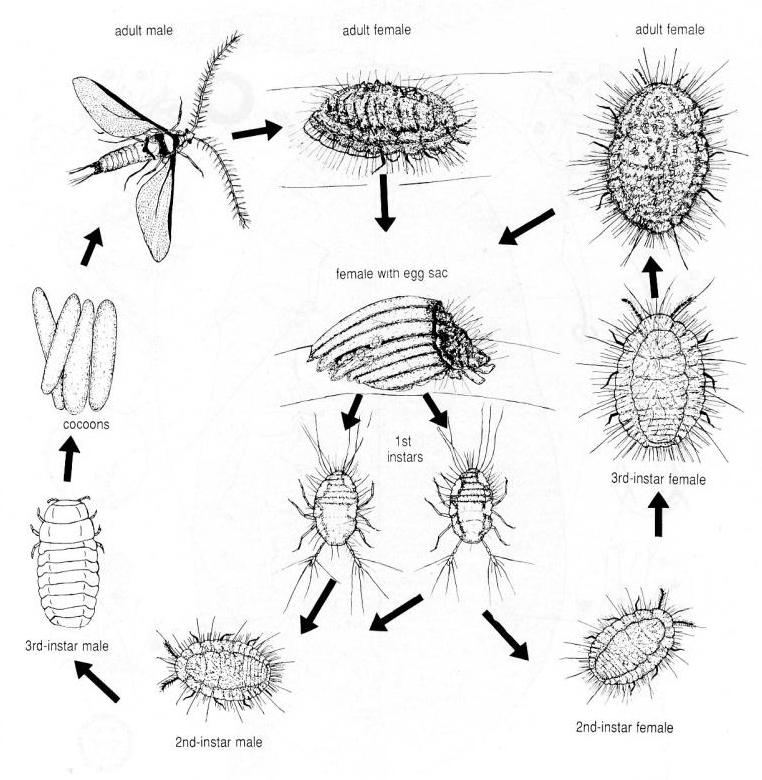 The lifecycle of Scales. Copyright - NZAC.
The lifecycle of Scales. Copyright - NZAC.
What are the Symptoms of Scale on Houseplants?
Small ovular or circular shells will begin to populate stems and on the underside of leaves. Although they can vary in colour, most varieties will sport warm colours that range from brown to yellow. Unfortunately, they'll also secrete a honeydew-like substance that makes the lower leaves sticky or shiny, as seen on the image below. Unlike other pests, they'll easily blend in with the foliage, so regularly checking for Scale is a good idea to prevent a further outbreak.
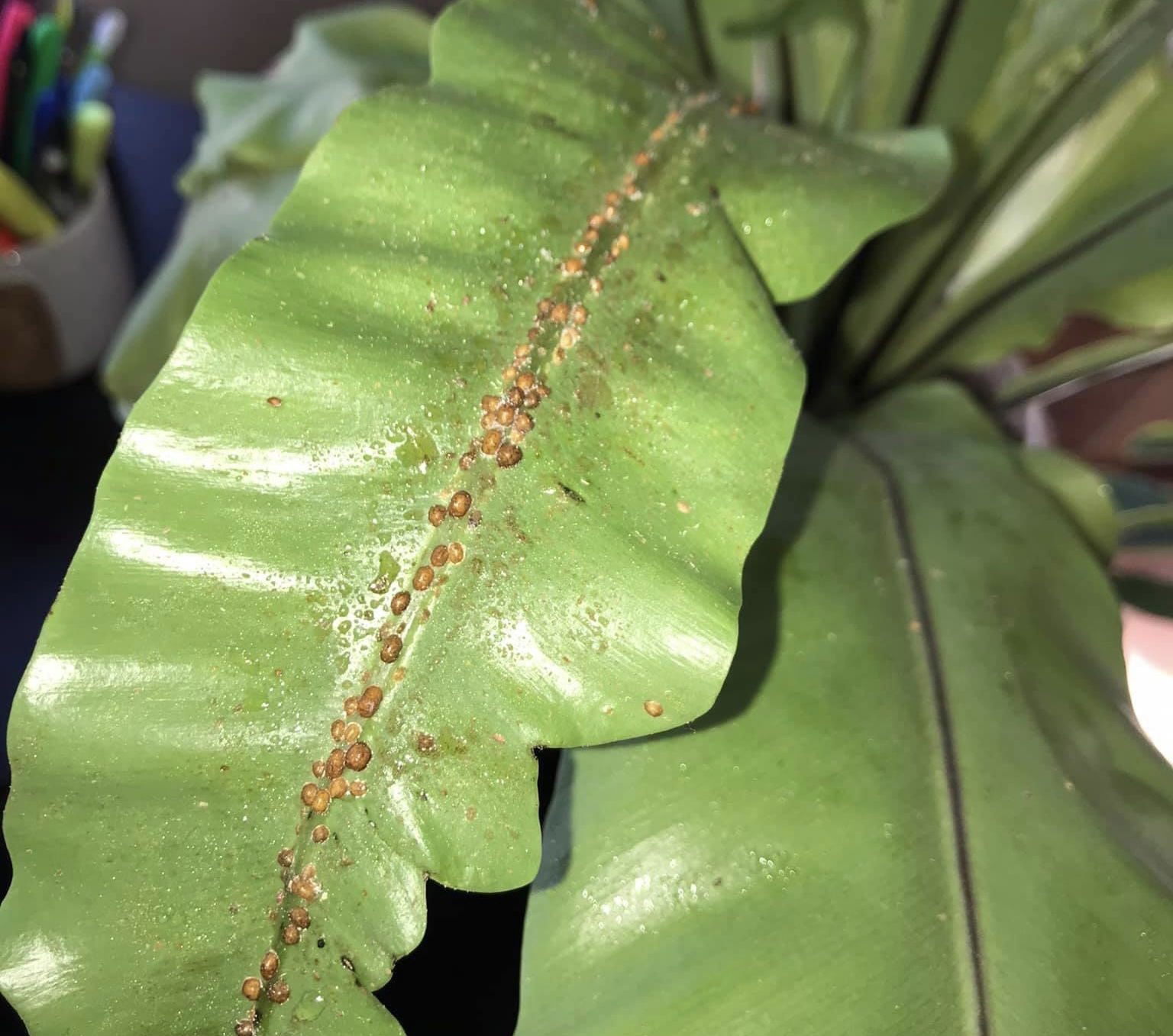 An example of Scale on a Bird Nest Fern.
An example of Scale on a Bird Nest Fern.
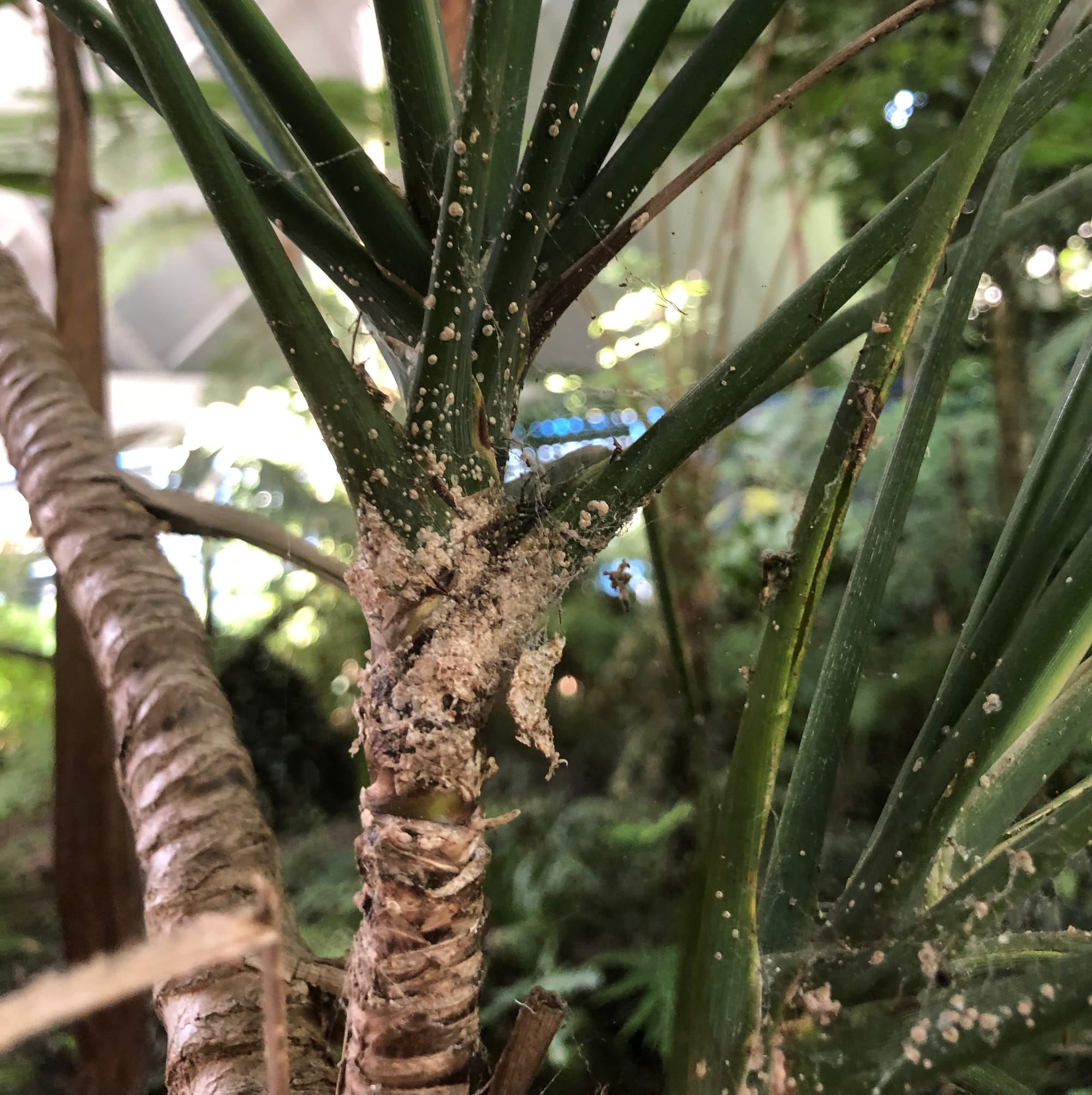 The crook of the stem and leaf/petiole is a common place to find a pest infestation. Pest: 'Boisduval' Scale.
The crook of the stem and leaf/petiole is a common place to find a pest infestation. Pest: 'Boisduval' Scale.
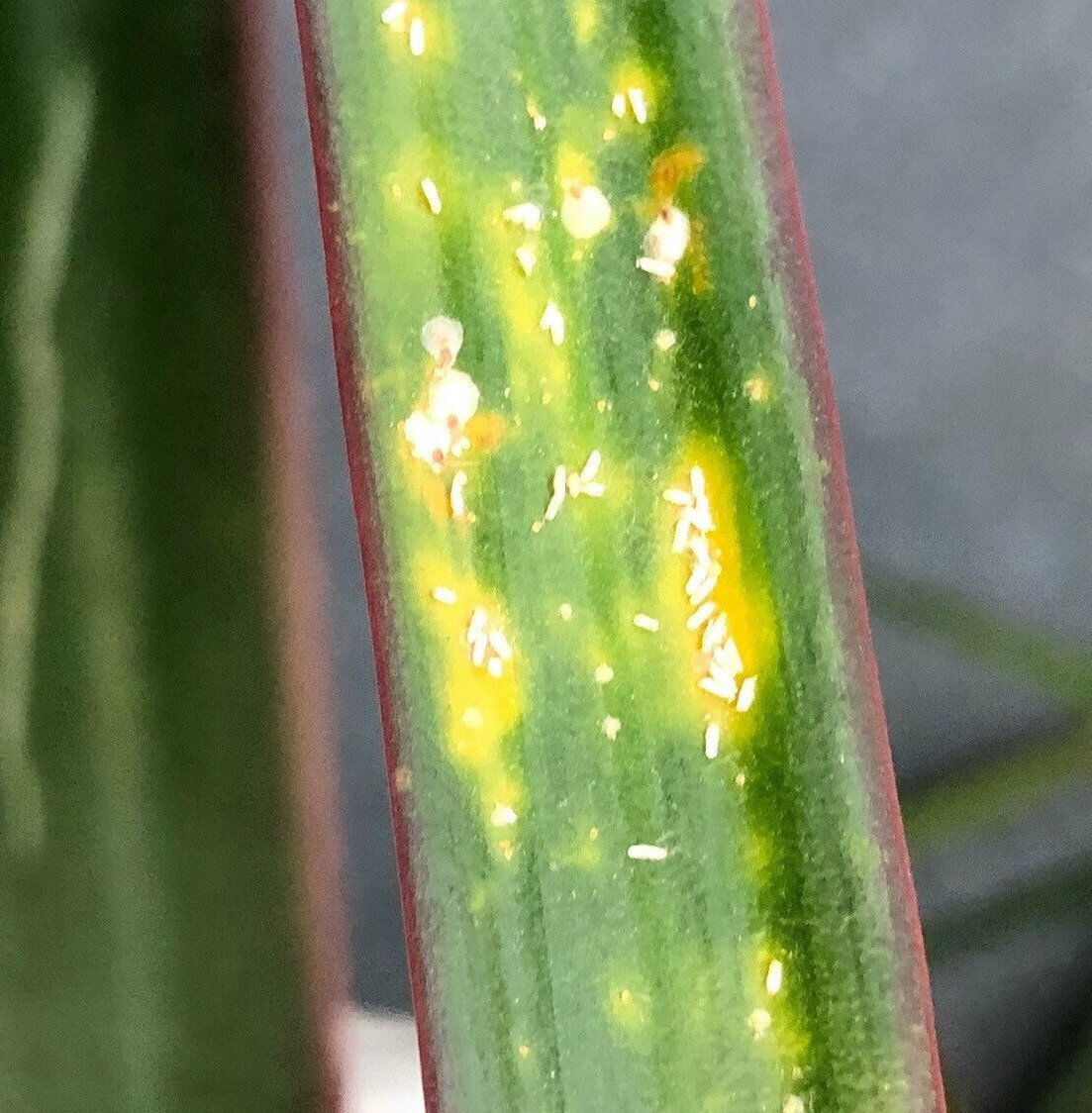 These white, tubular worm-like larvae are what's known as Euonymus Scale (Unaspis euonymi). The rounded pests pictured above are most likely to be Diaspis echinocacti.
These white, tubular worm-like larvae are what's known as Euonymus Scale (Unaspis euonymi). The rounded pests pictured above are most likely to be Diaspis echinocacti.
 Another example of Euonymus Scale on a Dracaena deremensis.
Another example of Euonymus Scale on a Dracaena deremensis.
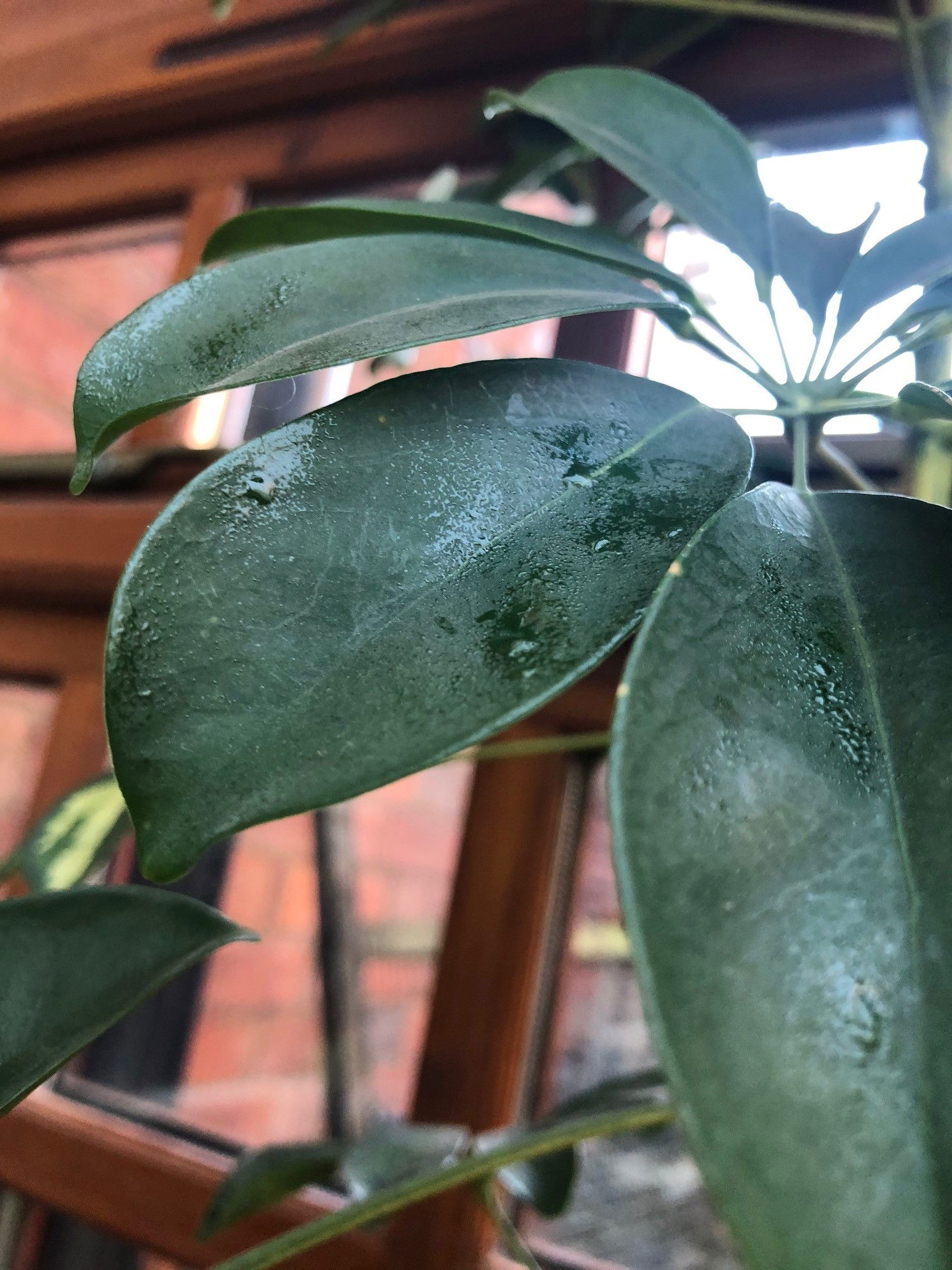 Along with the Scale insect itself, you may also notice a shiny sticky substance that'll develop on the foliage.
Along with the Scale insect itself, you may also notice a shiny sticky substance that'll develop on the foliage.
What are the most Susceptible Houseplants & Where do Scale live on them?
Scale will infest any surfaces that are strongly housed onto the plant; for instance the stems, petioles and both sides of the leaves. You'll also notice a shiny, sticky texture developing on the top-sides of the lower leaves.
Plants - Bananas, Cacti, Citrus, Crotons, Dracaena or Dragon Trees, Ficus, Money or Jade Plants, Pachira, Palms, Polyscias (Aralia), Sago or Cycads, Sansevieria, Umbrella Trees & Yucca.
 A heavily infested Scale accompanied by sooty mould which is a harmless fungi that thrives on pest-excretion.
A heavily infested Scale accompanied by sooty mould which is a harmless fungi that thrives on pest-excretion.
What Actions Needed are Needed to Eradicate Scale from Houseplants?
N. B - Most Scale will hatch their eggs in June, so spraying the nymphs during this time is best to keep future populations down. There are multiple methods and remedies in which you can use; rubbing alcohol and manual fingernail-prying or toothbrushing. Although products like rubbing alcohol or Provanto will significantly keep the numbers down, you may have some difficulty to begin with as mature adults will be protected by their broad, armour-like shells that'll block most products.
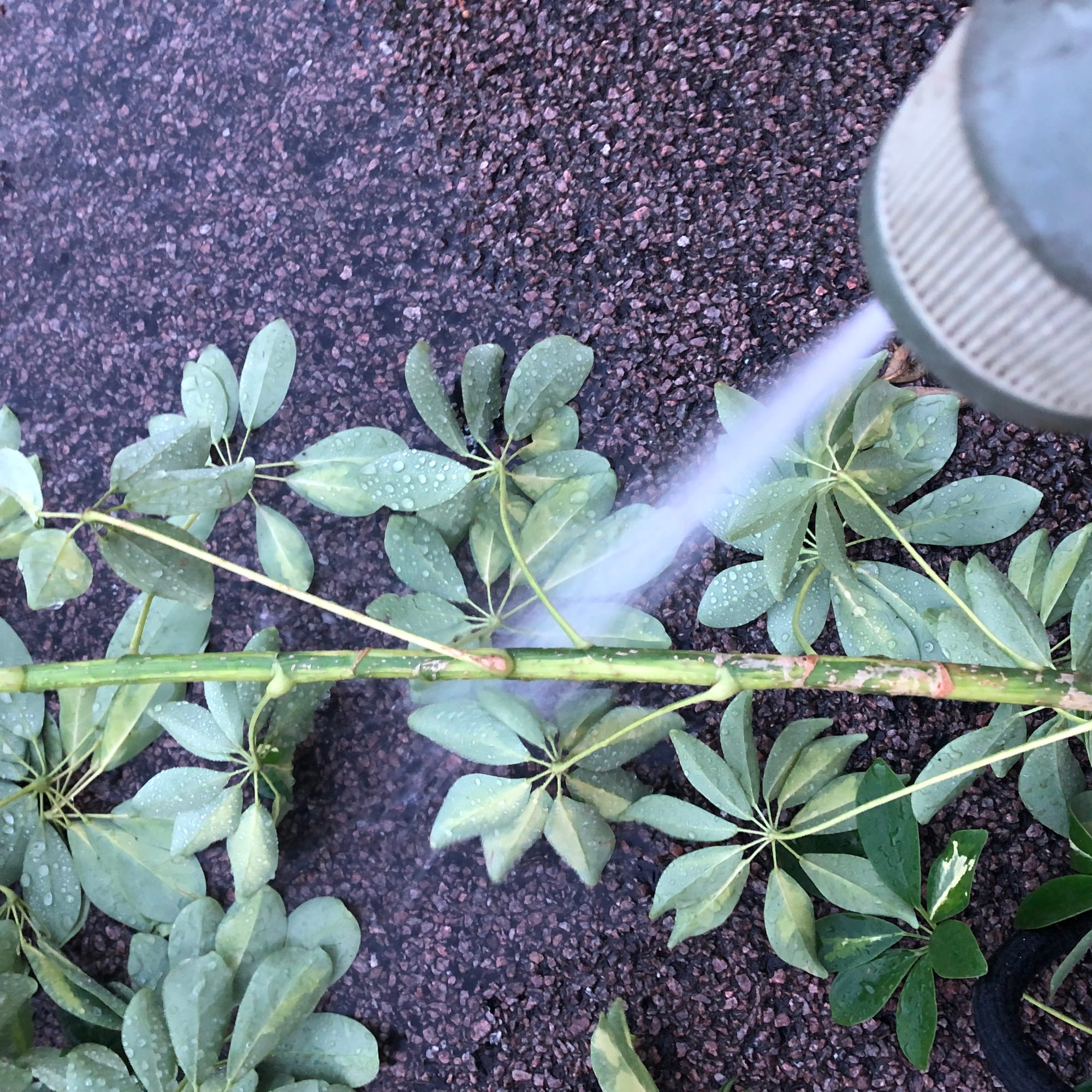 Hosing the foliage down is a brilliant & quick way to remove Scale from your houseplant, as long as you're delicate with its leaves.
Hosing the foliage down is a brilliant & quick way to remove Scale from your houseplant, as long as you're delicate with its leaves.
Stepped Guide to Remove Scale
1. Using your fingernails to pry-off each bug is the safest and most efficient way to remove them. Due to the easy chance of puncturing the leaves with a sharp tool, avoid anything other than your hands or an old toothbrush.
2. Once the visible infestations are removed, take it outside and gently wash the entire plant using an outdoor hose. It's important to spray it in at least three different angles to ensure all sections of the plant has been administered. Empathise the cubbyholes, for instance, between the stem and its petioles and undersides the leaf. If the nighttime temperature is above 15℃ (59℉), keep it outside so that natural predators, (like Ladybirds & Green Lacewings) can have a go at the bugs as well.
3. An optional tip is to replace the top 2cm (1 inch) of the soil. Not only will this improve the overall soil conditions, but it'll also remove any alive fallen bugs that have landed in it. This method can be taken once the plant has become fully dry after the first wash, and should only be performed once.
4. Consider whether to use an organic or chemical-based pesticide. The first option, of course, will avoid the use of harsh chemicals but will generally work slower than the latter option.
5. Keep the affected plant away from others in a quarantined room until the symptoms have subsided for at least four weeks. Always be wary of a relapse, and keep an eye out for possible outbreaks for several months after the last sighting.
Note: You can wipe the foliage or hose the foliage (with water) as frequently as you wish to knock-off the critters. When applying pesticides, always follow the manufacturer's recommendations on application.
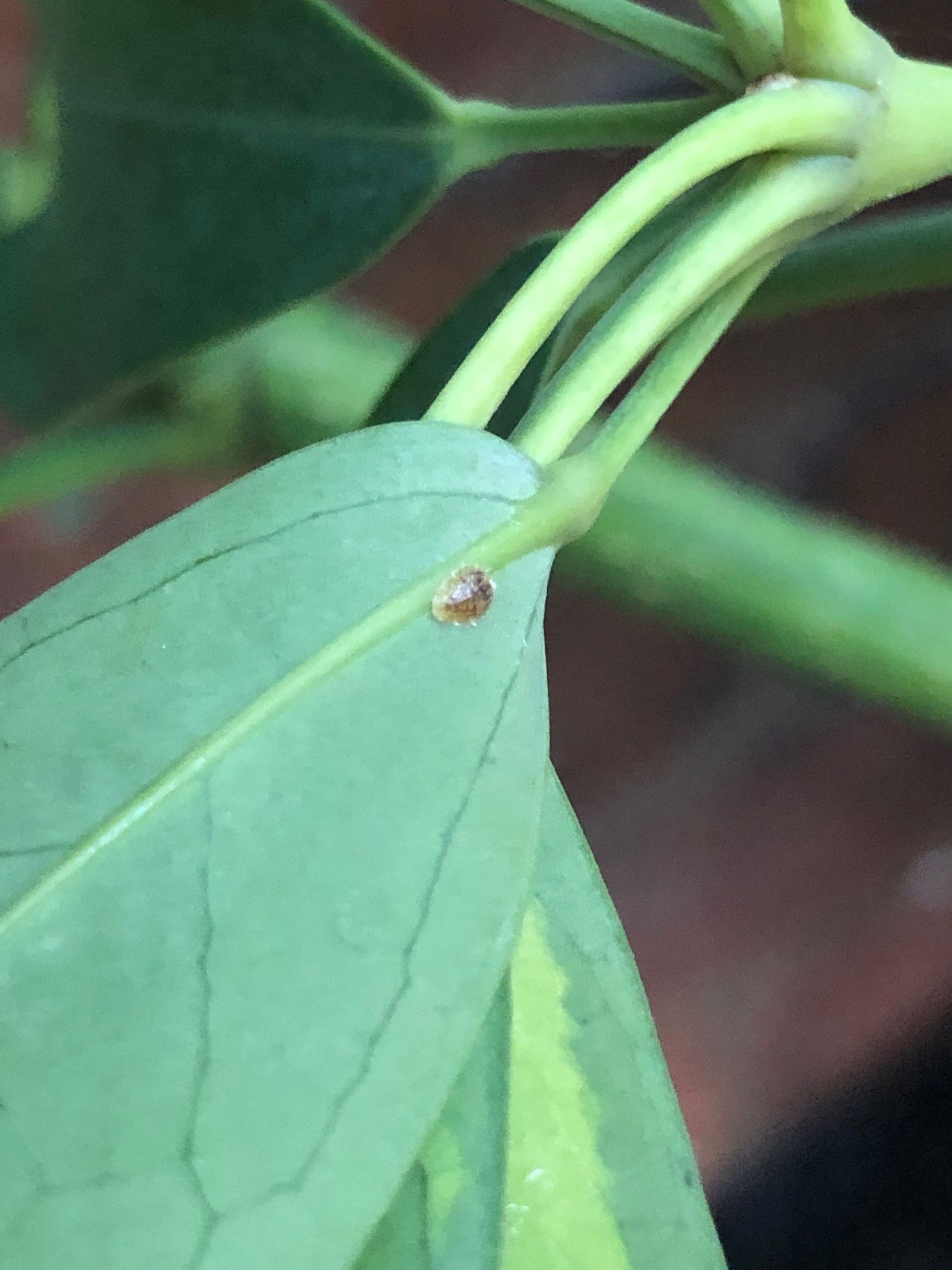 The midrib of a leaf is one of the most common areas to find an attack.
The midrib of a leaf is one of the most common areas to find an attack.
Organic Pesticides
Insecticidal or Horticultural Soap is another popular organic pesticide on the market, and there are two versions to consider. The first way is by purchasing an RTU (ready-to-use) spray bottle, which can be immediately used on the plants. Although most garden centres will stock this, it's far more economical to purchase the second option - concentrated bottles. This method comes with pro's and con's but is far cheaper to use if you have multiple infestations. It's self-explanatory and highly beneficial for the outbreak as long as you use the correct levels of dilution - the only downside is its availability in local centres. It's best to buy this option online as there are many different companies to choose from, with some being cheaper than others.
Natural Predators - The last non-organic method is by acquiring adult ladybirds or green lacewings. Although buying insects may be deemed as cruel or inappropriate, it's a natural, and least time-consuming way to remove the pests. Many online stores will sell the insects, all at varying prices and quantities. Once you've obtained the predators, release them in different sections of the plant, favouring the most infested areas first. They'll make their way around your plant, digesting both the eggs and the adults, leaving you with a potentially pest-free plant. You can purchase green lacewings with 15% off using code JOE15 at Andermatt's website (the leading UK organic pesticide company).
 Ladybirds and Green Lacewings are an excellent choice for natural pest reduction.
Ladybirds and Green Lacewings are an excellent choice for natural pest reduction.
Chemical Pesticides
Provanto - 'Bayer Garden Provado Ultimate Fruit and Vegetable Bug Killer Concentrate' works quickly after one application. It's a concentrated product, meaning that you'll have to dilute it with the appropriate amount of water. Spray both sides of the leaves, along with any cubbyholes that could house the infestation. Keep the plant away from other specimens once there are no signs of an outbreak for over a month. Chemical-based pesticides should only be used as a last-resort measure due to the risk of affecting other biodiversity.
Rubbing Alcohol - If you're looking for something with even more strength, try an Isopropyl Rubbing Alcohol, which can be bought from many online stores. This pesticide will work immediately, killing the bugs within a few hours of contact. Follow the manufacturer's recommendations and repeat hosing the plant down and pesticide application steps fortnightly until the infestation has elapsed. Keep it well away from others until the plant is deemed safe.
What are the Ways to Prevent a Scale Attack on My Houseplants in the Future?
1. When buying a new plant from a local plant shop or garden centre, check around the common areas for infestations like its leaves, stems and flowers. Most Scale issues come from already-affected plants, so always keep this in mind when increasing your plant-collection!
2. Change the top layer of the soil when bringing any new plant from a shop. Replacing the top layer of the compost will remove any larvae that may have fallen in, or been deposited by a pest. THE HOUSEPLANT DOCTOR™ does this religiously whenever a new plant enters the house!
3. Perform monthly checks for pests on your own plants. Although this may sound patronising, many gardeners forget to inspect their indoor specimens and that's exactly when an infestation can arise.
 A Scale infestation can re-emerge even after three months, so be vigilante until six months have passed. Pest: Diaspis echinocacti.
A Scale infestation can re-emerge even after three months, so be vigilante until six months have passed. Pest: Diaspis echinocacti.
Book a 1-to-1 Consultation with THE HOUSEPLANT DOCTOR™
Need realtime advice for your Scale situation? Book a video or message consultation with expert Joe Bagley, THE HOUSEPLANT DOCTOR™ (author or ukhouseplants.com). Choose between a ten or thirty-minute session & a platform of your choice (WhatsApp, FaceTime, Facebook Messenger or Zoom). Ask unlimited questions in one session, including queries on your dying/challenging plants, pests eradication, terrariums, repotting advice & everything in between! Available worldwide.
